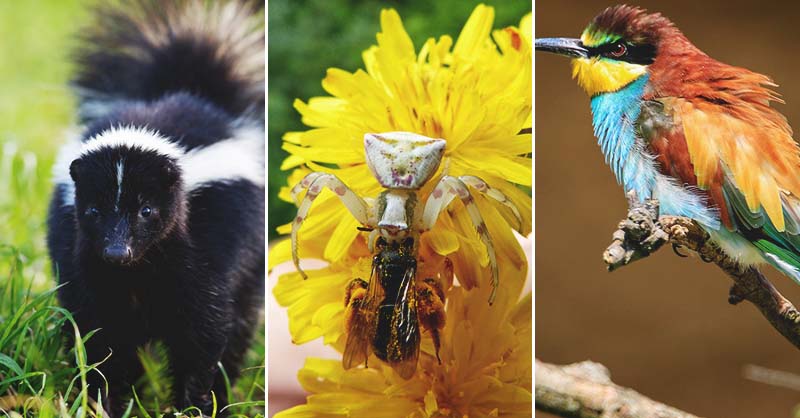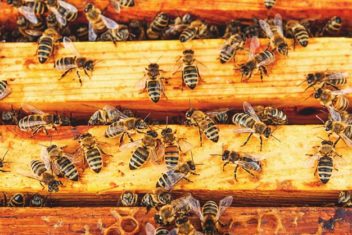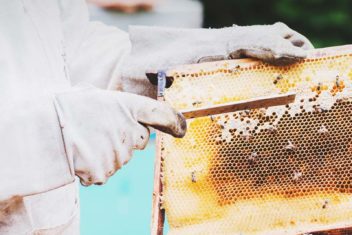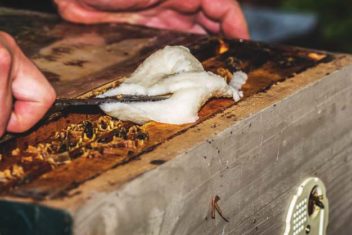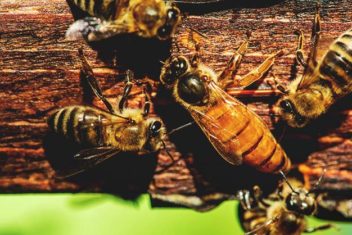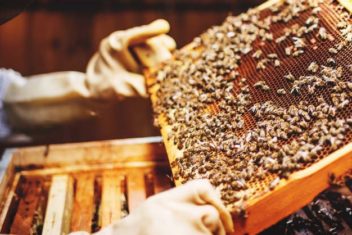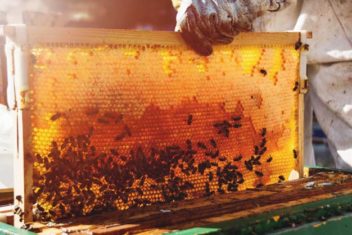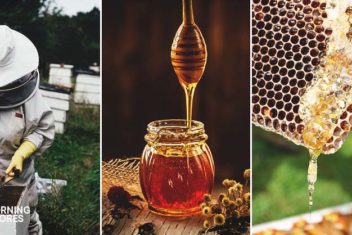As a beekeeper, you pride yourself in keeping your hive thriving and growing. You love the products your bees provide, year after year. It may be easy to assume that your colony can fend for itself, and in many cases, it can and does, but there are a few bee predators that you need to be aware of, some you can fend off, and others you should just know about.
If something changes with your hive, it will be beneficial to be able to identify why and what bee predators may be causing sudden changes.
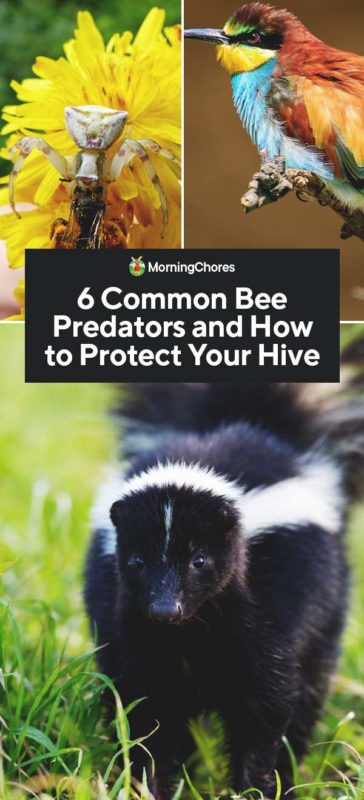
6 Most Common Bee Predators in the Wild
The following predators are wild animals and insects that prey on bees specifically. While you should always be on the lookout for small parasitic predators, like the Varroa Mite, there are a few others that can cause hive loss, or even swarming.
1. Bears
Bears are probably the first thing that comes to your mind when thinking about bee predators. Yes, we are talking about the big bears: the Grizzly and the Black and Brown Bears.
These wild giants do love honey as much as Pooh Bear, but they are much larger and destructive than Winnie. The bears you need to be on the lookout for not only enjoy honey but also the actual brood for the protein content.
When a bear has supper from your hive, it can be a devastating massacre. Bears can destroy an entire hive by ripping it apart or tipping it on its side to get to the honey and bees.
2. Skunks
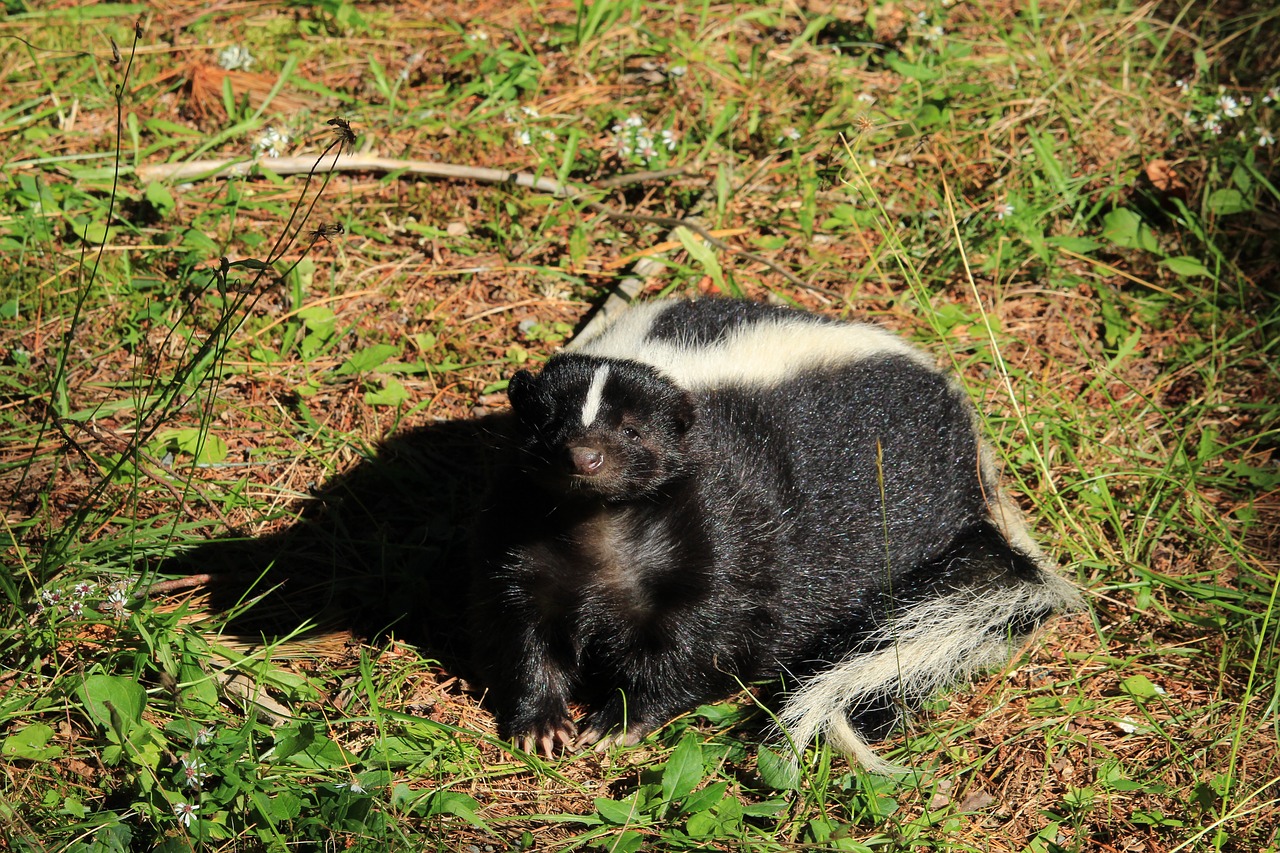
You will know if a skunk has raided your hive if there are remnants of bees laying about outside the hive. Skunks enjoy eating bees themselves, and they will actually suck on the bees, and spit out the parts they aren’t interested in eating.
A skunk will collect bees from the lower entrance of your hive, so if you can, raise your hive a few feet off the ground. This will deter this smelly nuisance from eating your bees. Skunks don’t want to stretch itself out and expose its soft belly to the threat of bee stings.
3. Beewolves AKA Wasps
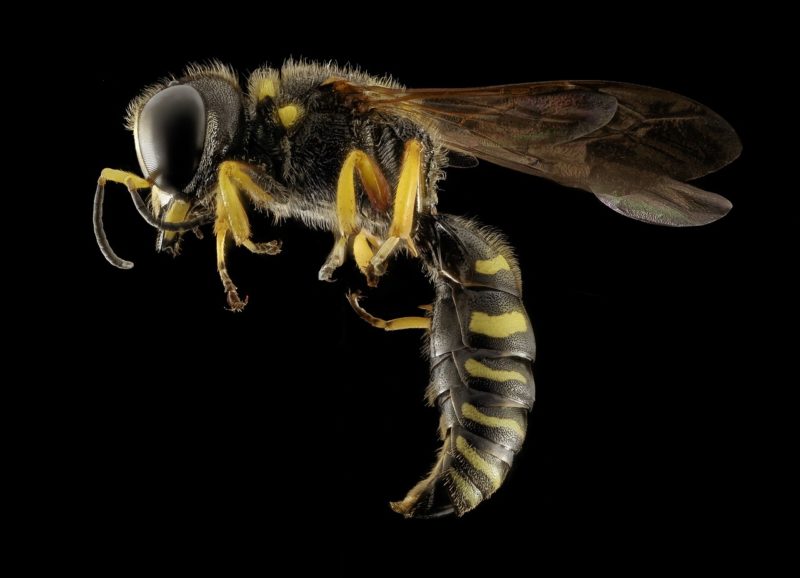
Beewolves are also known as wasps. These nasty insects prefer to eat bees and use them to feed their developing brood. Beewolves tunnel into the ground, where they lay their eggs on top of paralyzed, or dead, honeybees. The honeybees are kept alive as long as possible to keep them fresh for the wasps’ developing larva to consume.
According to Science Daily, studies have shown that the wasps use gas to preserve the bees in the brood cells while preventing bacteria and fungus from growing.
When a beewolf attacks a honeybee, it stings and paralyzes the bee. A honeybee may try to defend itself by stinging; however, the wasp has powerful armor that can deflect the bees attempt at defending itself.
Wasps will enter your beehive and attack the bees within it. In doing so, they are also exposing the hive to the danger of other robbers and predators by busting up the cells and allowing the sweet aroma of honey to drift into the wild.
While beewolves usually pick off a few bees here and there, this predator does not usually cause as much devastation as some of the others on this list.
4. Bee-Eater Birds
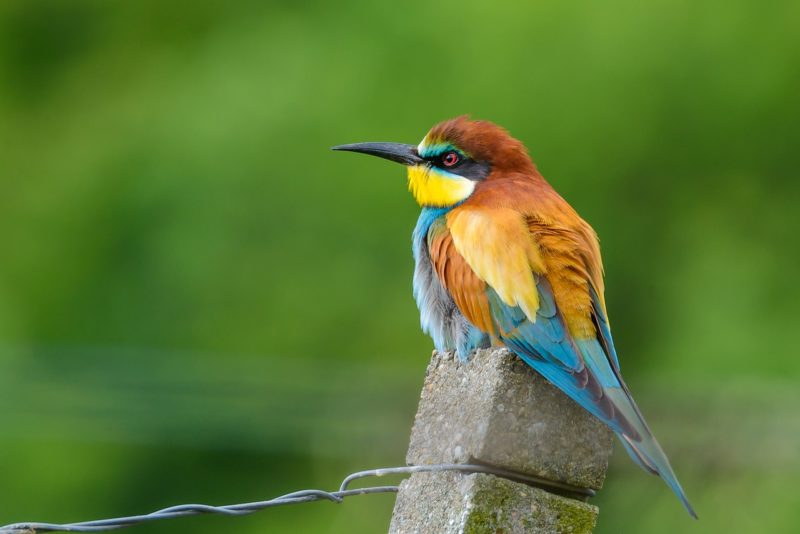
Luckily this predator is only found in certain parts of the world, mostly in Africa and Asia. Birds, in general, may choose to consume bees, but this family of birds, Meropidae, seeks out bees specifically.
Bee Eaters are careful in their hunt, as they expertly attack bees in mid-flight, and proceed to smash them on hard surfaces to remove the stinger, and any remaining venom; then they enjoy their meal.
Bee Eaters are actually quite beautiful birds with bright colors and a delicate long beak, perfect for bee-catching.
In general, you have very little control over bird predators, but rest easy knowing that any bee loss due to birds is actually going to be quite minimal.
5. Crab Spiders
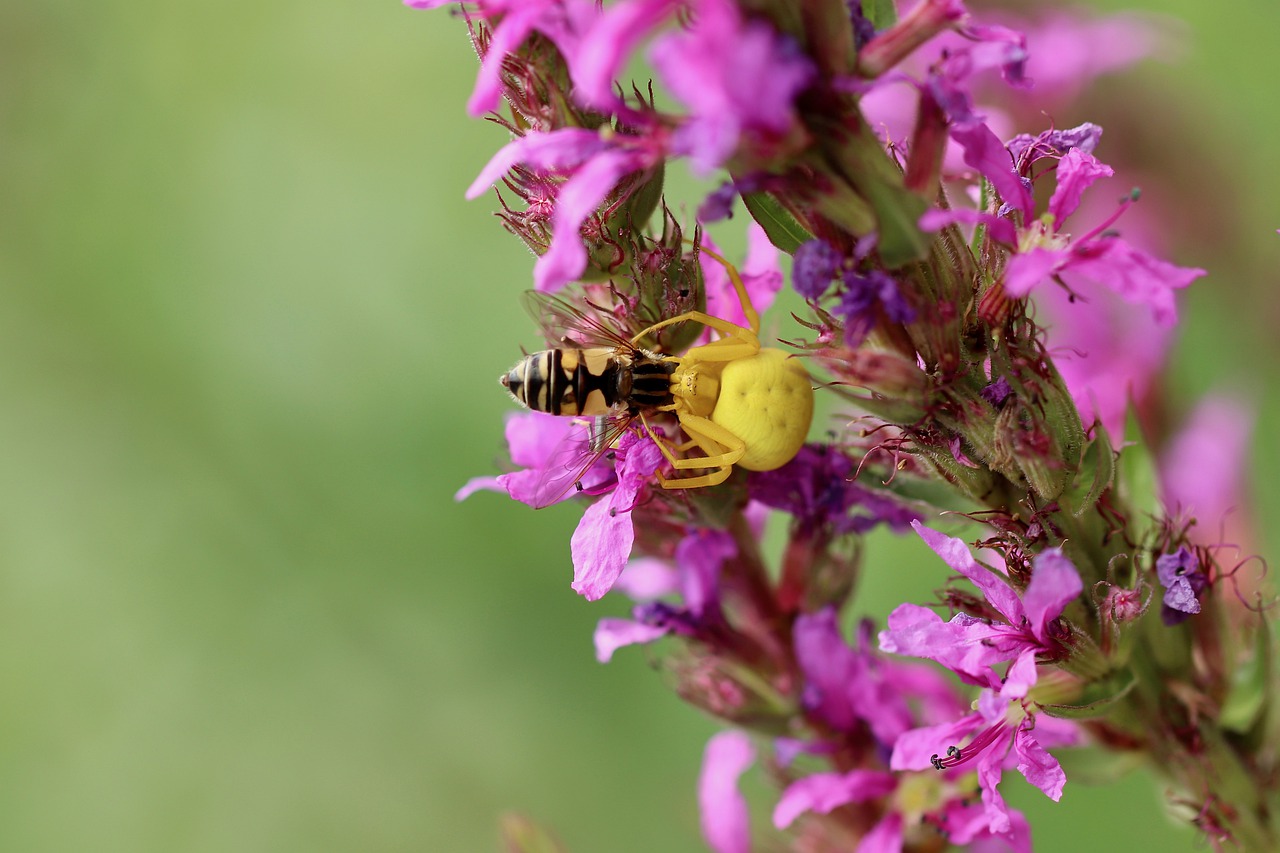
It’s no secret that the reason spiders build webs is to catch other insects to feast upon. This is no different for bees getting caught in a spider’s web.
There are some sneaky spiders, referred to as flower crab spiders, that hideout amongst bees’ favorite flowers hoping to catch their prey off guard. These spiders can even change color, camouflaging them against the flower they are hunting from.
Because crab spiders eat anything and everything, they don’t care whether they are eating a honeybee pollinator or another type of insect. Unless you have a significant spider problem, it usually doesn’t justify worrying about bee loss. However, some people decide to pursue pesticide options, which can do more harm than good for the bees.
6. Hive Beetles
The Small Hive Beetle is another invasive bug that infiltrates a beehive and sets up shop. Typically, these little beetles do not enter hives of healthy bees, because they risk being killed easily by worker bees.
If a hive is weak, ill, or otherwise, the beetles can quickly overtake an entire colony, or cause the hive to swarm.
How Bees Defend Themselves
Honeybees tend to take excellent care of themselves, however, unlike most animals we care for, we have very little control over what happens when a busy bee leaves its hive in pursuit of pollen.
1. The Sting
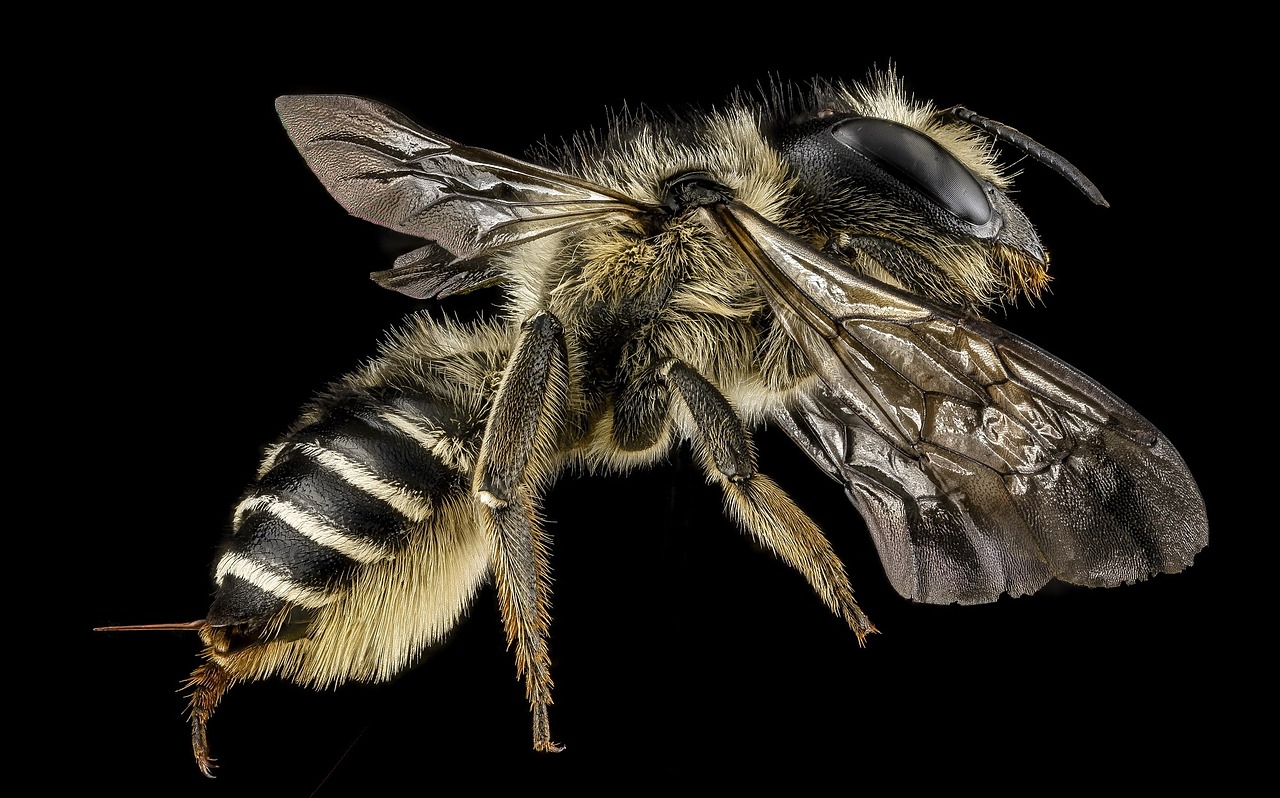
A honeybee’s primary defense mechanism is its ability to sting a predator, injecting a debilitating, sometimes deadly, venom. Even the Bee Eater birds are not immune to this line of defense, and that is why they take care to remove the venom before eating the honeybee.
Amazingly, only female honeybees can deliver a sting to its enemies, and despite what most people believe, the bee does not die after stinging its attacker, unless it has stung a mammal with fleshy skin–aka humans.
There are barbs on a bee’s stinger, invisible to the naked eye, that when plunged into mammal skin, cannot be removed; thus the bee loses its stinger, and whatever other internal elements go with it. With that being said, honeybees can use their stingers as defense mechanisms against other insects and non-mammalian animals and survive.
2. The Hot Ball
The Japanese honeybee has come up with an ingenious way to kill larger insects that pose a threat to their hives, like the wasp.
If an intruder is nearby, the honeybees will plot to ambush the unwanted visitor. Literally, they get together, hide, and then attack the intruder.
The bees attack the predator by forming a “bee ball” around it and begin flapping their wings to create an intolerable, deadly, environment for the predator. Heat and carbon monoxide from the rapid wing-flapping suffocate and kill the intruder.
There is hope that this trait can be bred into other types of bees, but at this time, there has been little success.
3. Propolis
Bees actually create their own entrance reducer with propolis— a strong mixture of wax, saliva, and sap. Honeybees have rarely been known to take this action on their own. Most of the reports of a bee-made reducer come after a manmade reducer has been removed. I guess they liked the idea!
How to Help Defend Your Bees Against Bee Predators
The way bees defend themselves is impressive, and they continue to evolve in ways that keep them resilient against outside attacks from the wild. However, sometimes, they need your help against bee predators. The following tips are ways you can give your bees a helping hand.
1. Fence Your Hive In
Fencing is an easy way to keep large predators out of your hives. Using anything from chicken wire to hot fencing can help keep paws off your precious honey stores.
2. Keep Your Hive Off The Ground
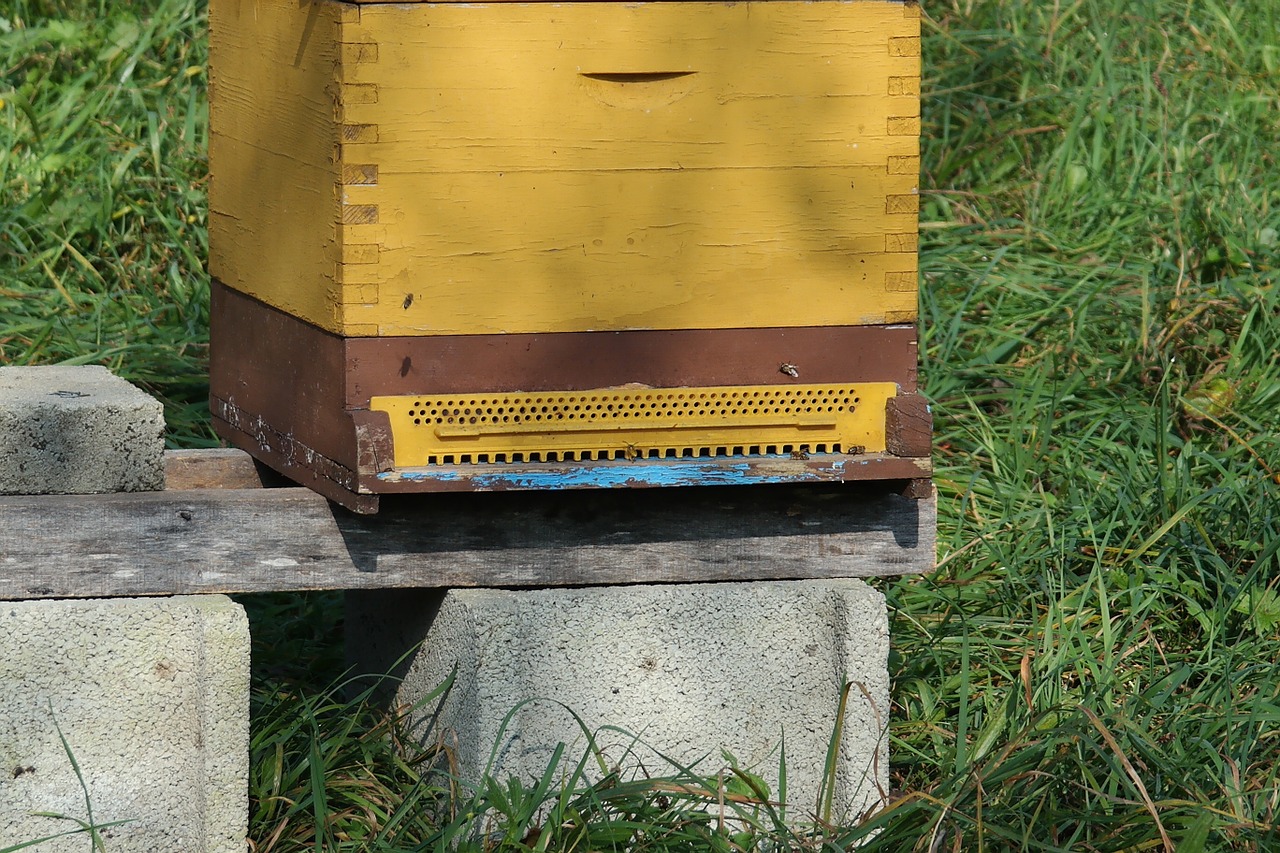
Raising your hive a few feet off the ground will discourage skunks from stretching out and reaching up into your hive. They don’t want to be stung on their bellies.
3. Live Traps
Live traps are ok for smaller bee-seeking critters, but be warned…if you catch a skunk, you are going to start your day off on the wrong foot. Live traps work best for predators like raccoons; however, they are more like band-aids rather than solutions to the problem.
4. Spike Strip
Ok, so this measure seems a little mean, but it has worked for fellow beekeepers. Basically, they make a board with nails or tacks poking upward to keep mammals away from the hive. Ouch!
5. Robbing Screens
These are screens meant to keep unwanted wasps, robbing bees, or beewolves, out of the hive while allowing resident bees to come and go. The screen confuses insects that do not live in the hive because they can smell the honey, and try to enter where they can smell it. The screen allows those leaving the hive to learn how to leave while keeping the intruders at bay.
6. Entrance Reduction
These are additions to a hive that allows for the small honeybees to enter the hive and not larger predators like wasps.
7. Natural Deterrents
Sometimes you can research smells that certain predators find unsavory. For example, certain kinds of urine or oil from other animals can deter predators from attempting to enter your hive.
Yes, bees do a great job of defending their colony, but if you know who has been dipping into the honey pot, you can also find out what rubs predators the wrong way and deploy your best artillery.

